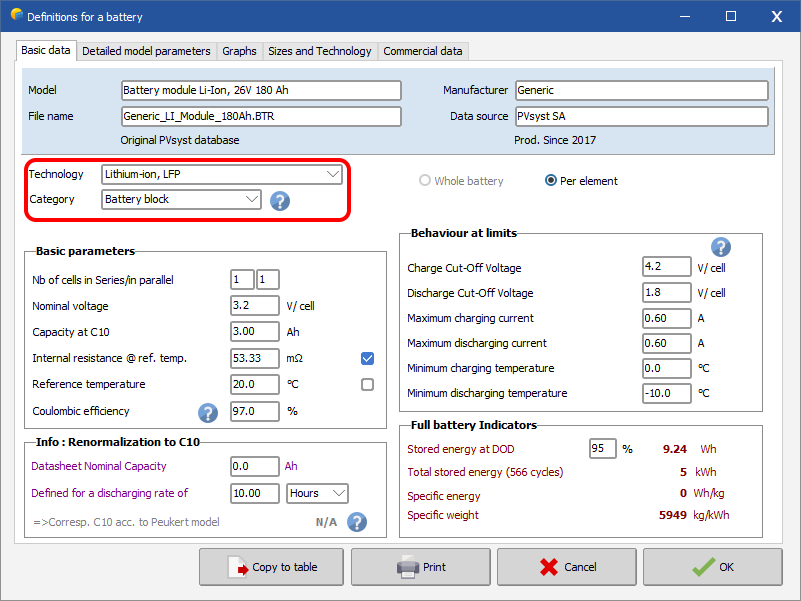|
<< Click to Display Table of Contents >> Lithium-ion : Technology, Base element and Category |
  
|
|
<< Click to Display Table of Contents >> Lithium-ion : Technology, Base element and Category |
  
|
| - | Technology refers to the lithium-ion chemistry. The different technologies are described here. Several operating default settings (namely the voltage) are technology-sensitive. |
| - | Category: Lithium batteries are often proposed as different packages: |
othe basic cell, produced by some few manufacturers (3.3 to 3.8V, 3 Ah to some dozens of Ah),
othe modules, assemblies of cells in series and in parallel. The series/parallel configuration is often described by XSYP, meaning X cells in Series and Y cells in Parallel. The modules may be mechanically similar to usual Lead-acid battery blocks, or as flat elements for rack mounting.
oManufacturers propose Racks or Cabinets (i.e. sets of modules) as Battery components.
oFinally a big industrial battery installation will be a set of racks in a container. This is not considered as a component in PVsyst: this set will be defined as a set of batteries (racks or cabinets) in series and in parallel in the system definition.
Therefore In PVsyst, the component database will hold elementary cells, Battery or Rack modules, eventually Racks or Cabinets. These are named the "Category".
| All the basic properties are specified for the elementary cell, which is the basic component, and will give rise to a *.BTR file. |
| Modules are constructed from an assembly of elementary cells: when opening a cell in the database, you can specify the Series/Parallel configuration XSYP, and save this device as a battery module (also a ".BTR file). The dialog will allow to see the parameters either as a cell, or for the full module. |
| If you open a module in the database, the "Category" choice will still allow to define a set of these modules (new parameters XSYP below the Category box), which may again be saved as a new PVsyst component. When opening this component (Rack or Cabinet) in the dialog, you will have the opportunity of seeing the parameters either of the cell or of the full Rack. |
